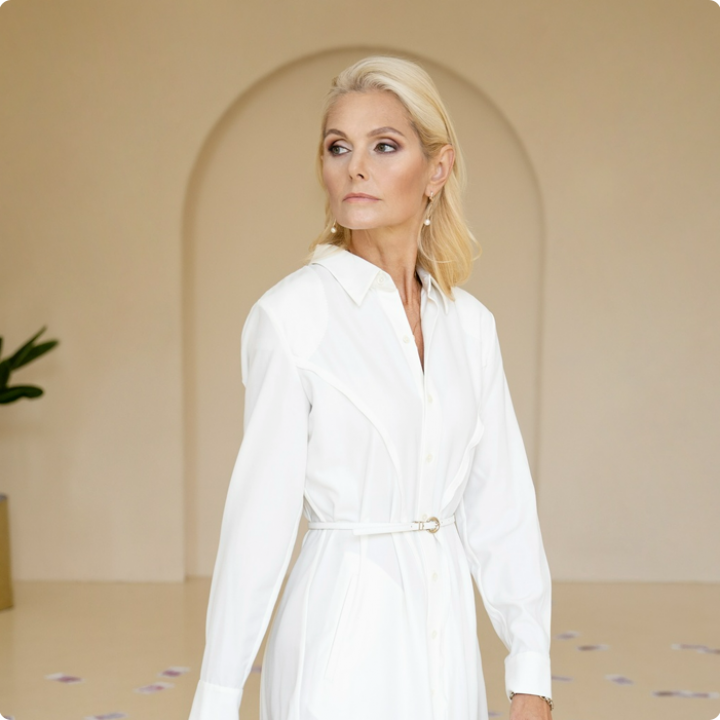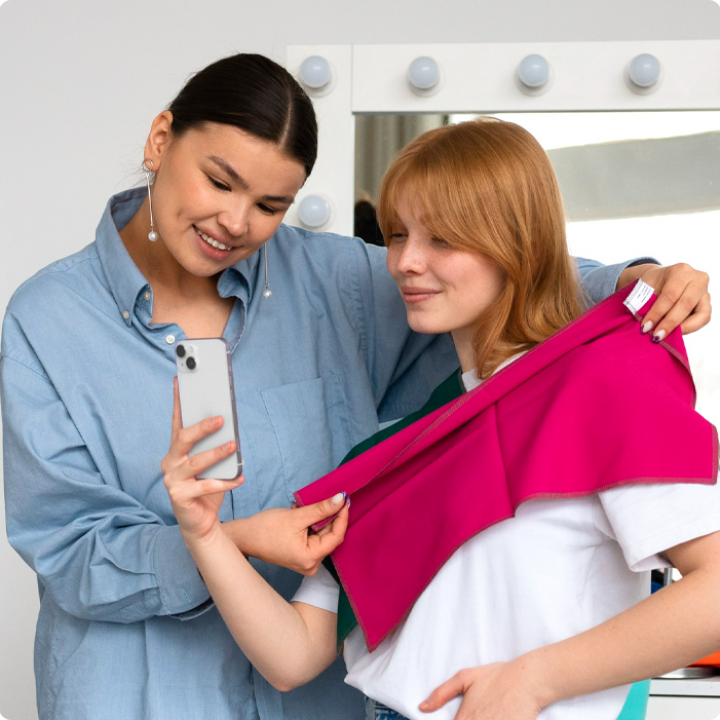
How to Choose Clothes That Move with You, Not Against You
We've all been there: a stunning outfit that looks incredible in the mirror but feels utterly restrictive the moment you sit down, reach for something, or navigate a busy street. In the world of fashion, true style isn't just about how clothes look; it's profoundly about how they feel . This "Fit & Feel Diary" is dedicated to the art of choosing garments that move with your body, enhancing your comfort and confidence, rather than hindering them.
Why Fit and Feel Are Non-Negotiable
Beyond aesthetics, the right fit and feel impact your day in countless ways:
Confidence: When clothes fit well and feel good, you carry yourself differently. You're not constantly adjusting, pulling, or feeling self-conscious.
Comfort: Especially in a warm climate like Chennai, clothing that allows for airflow and doesn't cling uncomfortably is paramount for daily well-being.
Functionality: Clothes should support your activities, whether it's navigating public transport, sitting for long hours, or simply enjoying a leisurely walk.
Longevity: Well-fitting clothes are less likely to stretch out, tear, or wear poorly in areas of strain.
The Anatomy of a Great Fit
Forget "standard sizes" – they're just a starting point. A great fit considers the garment's relationship with your unique body shape.
Shoulders: For shirts, jackets, and blazers, the seam should sit precisely at the edge of your shoulder bone. If it's too wide, you'll look slumped; too narrow, and it will feel tight and restrict movement.
Chest/Bust: Fabric should skim, not pull. Buttons shouldn't gape, and there should be no horizontal lines of tension across the chest or bust.
Waist/Hips: Trousers, skirts, and dresses should sit comfortably at your natural waist or preferred rise without digging in or requiring constant hitching up. There should be enough room for sitting without strain.
Sleeve Length: For long sleeves, they should end at your wrist bone. For short sleeves, mid-bicep is often ideal, allowing for full arm movement.
Hem Length:
Trousers: Should gently break over your shoes for a clean look, or be cropped at the ankle for a modern touch. Avoid pooling fabric.
Dresses/Skirts: Choose lengths that are comfortable for your lifestyle – whether it's mini, knee-length, midi, or maxi. Ensure you can walk freely without tripping.
The Power of Fabric: What Feels Good?
Beyond the cut, the material of your clothing dictates its feel and how it moves.
Natural Fibres for Breathability:
Cotton: Soft, absorbent, and breathable. Look for various weights – crisp poplin for shirts, soft jersey for tees, durable denim for jeans.
Linen: Exceptionally breathable and quick-drying, perfect for warm climates. It has a relaxed drape that moves beautifully.
Viscose/Rayon (Derived from wood pulp): Drapes fluidly, feels soft and silky, and breathes well. Great for flowy dresses and blouses.
Tencel/Lyocell (Sustainable wood pulp fibre): Known for its incredible softness, smooth feel, and excellent moisture-wicking properties.
Stretch for Freedom of Movement:
Elastane/Spandex/Lycra: Even a small percentage (2-5%) of these fibres in cotton or denim can make a huge difference in comfort, allowing the fabric to stretch and recover, preventing restriction.
Knits vs. Wovens: Knit fabrics (like jersey, sweaters) naturally have more stretch and give than woven fabrics (like denim, crisp cotton shirting), making them inherently more comfortable for active wear.
Avoid: Stiff, non-stretch synthetic fabrics that trap heat and don't allow for natural movement, especially in humid conditions.
Practical Tips for Choosing Clothes That Move With You
- The "Sit-Down" Test: Always sit down, raise your arms, and take a few steps in the changing room. Does the fabric pull? Does the waistband dig in? Can you move freely?
- Size Up, Tailor Down: If you're between sizes, often sizing up and then getting the garment tailored for a precise fit (especially for formal wear or outerwear) yields the best results. It's easier to take fabric away than to add it.
- Consider Your Activities: If you have an active job or commute, prioritize fabrics with stretch or relaxed fits. For mostly sedentary days, you might tolerate slightly less give.
- Listen to Your Body: If a garment feels uncomfortable in the store, it will only feel worse after an hour of wear. Don't compromise on comfort for the sake of a trend.
- Build a Core of Comfort: Just like your "Daily Style Playbook," identify pieces in your wardrobe that consistently feel amazing and fit well. These are your comfort heroes.
- Read Fabric Labels: Make it a habit to check the material composition. This gives you immediate insight into how the garment will feel and behave.
Choosing clothes that move with you is about prioritizing your comfort and well-being. It's about building a wardrobe where every piece feels like a second skin, allowing you to go about your day with ease, confidence, and undeniable style. Invest in garments that feel as good as they look, and you'll transform your daily dressing experience.




